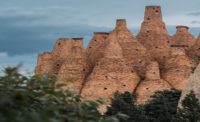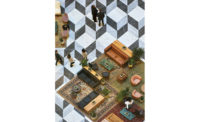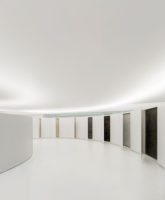Deep in the Arizona desert, against the jagged outline of the Swisshelm and Pedregosa mountains toward the Mexican border, an upended reinforced-concrete ziggurat disappears into the red clay earth. The 50-foot-square subterranean pavilion, McNeal 020, the first built project by Paris-based David Telerman, “reveals itself progressively,” says the designer, who has long been fascinated by the beauty and desolation of the American Southwest desert. The design encourages viewers not only to discover elements of nature from various vantage points, but also to explore “how the body reacts to architecture” at multiple levels —of the structure, and sensorially and viscerally. Using cast-in-place concrete, Telerman hoped to underscore the contrast between the natural context and the manmade structure that otherwise might melt into the landscape. Long, perpendicular bars of concrete traverse the desert floor and form bridges leading to a central platform bordered by four staircases that comprise an inverted pyramid. The structure dives some 9 feet into the ground to an enclosed central space containing only a bench, inviting visitors to a moment of solitary contemplation.
Snapshot: McNeal 020 by Atelier David Telerman
McNeal, Arizona

McNeal 020. Photo © Iwan Baan





Post a comment to this article
Report Abusive Comment